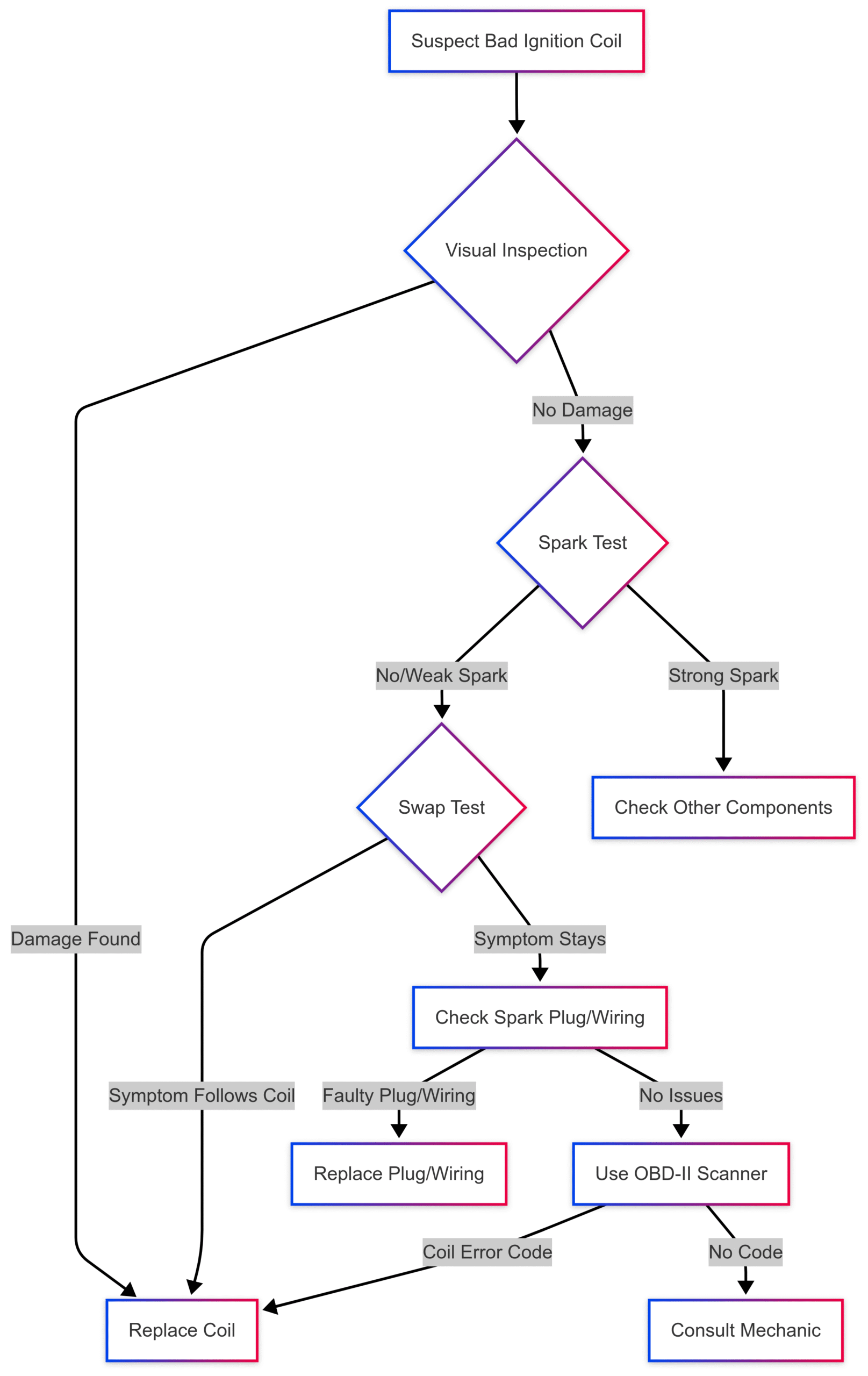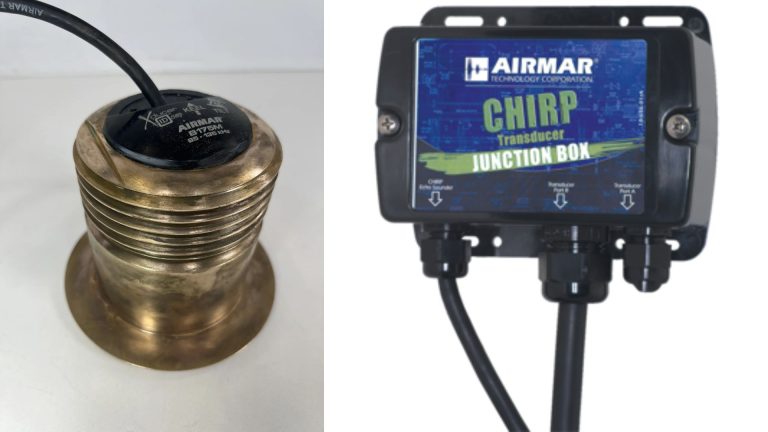What are the symptoms of a bad coil on an outboard motor?
Discover the symptoms of a bad ignition coil on an outboard motor, including misfires, rough idling, and backfiring, with expert diagnosis and replacement tips.
Outboard motors power countless boats, from small fishing vessels to high-performance marine crafts. At the heart of their ignition system lies the ignition coil, a critical component that generates the high-voltage spark needed to ignite the fuel-air mixture in the engine’s cylinders. When an ignition coil fails, it can severely impair the motor’s performance, leaving boaters stranded or struggling with unreliable operation. Recognizing the symptoms of a bad ignition coil is essential for timely diagnosis and repair, ensuring your outboard motor runs smoothly.
This article explores the symptoms of a failing ignition coil on an outboard motor, drawing from real-world experiences and technical insights. We’ll cover how a bad coil affects performance, diagnostic methods, replacement procedures, and preventive maintenance tips. Whether you own a 70hp Johnson, a 175hp Mercury, or another outboard motor, this guide will help you identify and address ignition coil issues effectively.
What Is an Ignition Coil and Why Does It Matter?
An ignition coil is a transformer that converts the low-voltage current from the battery (typically 12 volts) into the high-voltage pulse (15,000–20,000 volts) required to create a spark at the spark plug. This spark ignites the fuel-air mixture, driving the engine’s pistons and powering the boat. In outboard motors, ignition coils are often configured as coil-on-plug systems, where each cylinder has its own coil, or as part of a coil pack serving multiple cylinders.
A faulty ignition coil disrupts this process, leading to incomplete combustion, reduced power, or complete engine failure. For boaters, this can mean anything from a frustrating day on the water to costly repairs if the issue is ignored. Understanding the symptoms of a bad coil is the first step toward maintaining your outboard motor’s reliability.
Key Symptoms of a Bad Ignition Coil
A failing ignition coil manifests through several noticeable symptoms that affect the outboard motor’s performance. Below, we outline the primary signs to watch for, with detailed explanations of how they impact operation.
1. Engine Misfires
An engine misfire occurs when one or more cylinders fail to combust properly due to a weak or absent spark. A bad ignition coil may not deliver the necessary voltage to the spark plug, causing the engine to cough, sputter, or shake. Boaters often describe this as the motor running “unevenly” or “roughly.” Misfires are particularly noticeable during acceleration or under load, such as when pulling a skier or navigating choppy waters.
Impact: Frequent misfires can damage the catalytic converter (if equipped) and reduce fuel efficiency, as unburned fuel is wasted.
2. Difficulty Starting
A failing coil may struggle to produce a strong spark, making it hard to start the engine, especially when cold. You might hear the starter motor cranking without the engine firing up. In some cases, the motor starts fine when cold but refuses to restart once warm, as heat exacerbates the coil’s internal faults.
Real-World Example: A boater with a 175hp Mercury reported that the engine started easily when cold but failed to restart after warming up, a classic symptom of a thermally sensitive coil failure.
3. Rough Idling
When idling, a motor with a bad coil may feel unstable, with noticeable vibrations or shaking. This occurs because one or more cylinders are not firing consistently, disrupting the engine’s smooth operation. Rough idling is often accompanied by a fluctuating RPM gauge.
Impact: Prolonged rough idling can strain engine components and lead to further wear.
4. Reduced Fuel Efficiency
A misfiring engine burns fuel inefficiently, as some of the fuel-air mixture is not combusted properly. This results in lower fuel economy, meaning you’ll need to refuel more often for the same distance traveled. For boaters, this can significantly increase operating costs, especially on long trips.
5. Backfiring
Backfiring is a loud, explosive noise caused by unburned fuel igniting in the exhaust system. A bad ignition coil can cause incomplete combustion, allowing fuel to escape into the exhaust, where it ignites under heat and pressure. Backfiring is often accompanied by black smoke and a strong gasoline odor.
Impact: Frequent backfiring can damage exhaust components and reduce engine longevity.
6. Thick Exhaust Smoke
Inefficient combustion due to a faulty coil can lead to black or thick smoke from the exhaust. This happens when unburned fuel and soot accumulate, indicating that the engine is not burning fuel cleanly.
Visual Cue: Look for dark, sooty exhaust emissions, especially during acceleration or idling.
7. Illuminated Check Engine Light
Modern outboard motors are equipped with onboard diagnostics that monitor engine performance. A bad ignition coil can trigger the check engine light (CEL) by registering misfires or ignition-related fault codes (e.g., P0351 for a coil malfunction). An OBD-II scanner can pinpoint the affected cylinder.
Note: Not all outboard motors have a CEL, especially older models, so this symptom may not apply universally.
8. Sluggish Acceleration
If one or more cylinders are misfiring, the engine may struggle to produce full power, resulting in sluggish acceleration. This is particularly noticeable when trying to get on plane or increase speed quickly.
Real-World Example: A 70hp Johnson owner reported that the motor “lacked power totally” when one coil failed, as one cylinder was effectively dead.
9. Engine Stalling
A bad coil can cause the engine to stall, especially at idle or during acceleration. This happens when the spark is too weak to sustain combustion, causing the engine to shut down unexpectedly.
Impact: Stalling in open water can be dangerous, especially in rough conditions or near obstacles.
10. Hot or Damaged Coil
Physically inspecting the coil may reveal signs of failure, such as overheating or a sticky, oozing substance on the coil’s surface. This indicates that the internal insulation is deteriorating, compromising the coil’s ability to function.
Inspection Tip: Use caution when handling coils, as they may be hot after engine operation.
11. Intermittent Power Surges
In some cases, a failing coil may work intermittently, causing power surges when the affected cylinder briefly regains spark. This can feel like the engine is “cutting in and out” or experiencing sudden bursts of power followed by weakness.
Real-World Example: A boater noted that their 70hp Johnson ran fine initially but lost power as the motor warmed up, likely due to thermal expansion worsening the coil’s internal faults.
How a Bad Coil Affects a 70hp Johnson Outboard
To illustrate the impact of a bad ignition coil, consider a 70hp Johnson outboard with one faulty coil. Since this motor typically has multiple cylinders (e.g., two or three, depending on the model), a single bad coil will disable one cylinder, significantly reducing performance. The motor may exhibit:
- Reduced Power: With one cylinder not firing, the engine operates at a fraction of its full capacity, making it struggle to reach top speed or maintain plane.
- Rough Running: The uneven firing of cylinders causes vibrations and a choppy ride.
- Intermittent Issues: The coil may fail only when warm, leading to inconsistent performance that worsens during extended use.
- Fuel Inefficiency: The remaining cylinders work harder to compensate, burning more fuel for less output.
In severe cases, the motor may stall or fail to start, leaving you stranded. Diagnosing the issue promptly is critical to avoid further damage.
Diagnosing a Bad Ignition Coil
Diagnosing a bad ignition coil requires a systematic approach to confirm the issue and identify the faulty component. Below are common methods used by boaters and mechanics:
1. Visual Inspection
Check the coil for physical signs of damage, such as cracks, burn marks, or oozing insulation. Inspect the wiring and connectors for corrosion or loose connections, as these can mimic coil failure.
2. Spark Test
Remove the spark plug and reconnect it to the coil’s spark plug wire. Ground the plug against the engine block and crank the motor. A strong, blue spark indicates a healthy coil, while a weak, yellow spark or no spark suggests a faulty coil.
Safety Note: Perform this test with the motor off and in a well-ventilated area to avoid electrical shock or fuel ignition.
3. Swap Test
If the motor has multiple coils, swap the suspected bad coil with a known good one from another cylinder. Run the engine and check if the misfire or symptom follows the coil to the new cylinder. If it does, the coil is faulty.
Example: A boater with a 70hp Johnson used this method to confirm that a misfire moved with the swapped coil, pinpointing the defective unit.
4. OBD-II Scanner (Modern Motors)
For outboard motors with onboard diagnostics, connect an OBD-II scanner to retrieve error codes. Codes like P0351–P0359 indicate ignition coil malfunctions, specifying the affected cylinder.
5. Timing Light Test
Attach a timing light to each spark plug wire while the engine runs. A steady flash indicates a good coil, while erratic or absent flashes suggest a bad coil.
Real-World Tip: A boater with a 175hp Mercury used a timing light to identify a coil that fired inconsistently, confirming the diagnosis.
6. Spark Plug Inspection
Remove the spark plugs and examine them for signs of fouling, such as oil or carbon deposits. A dirty or oily plug may indicate a cylinder not firing due to a bad coil.
Chart: Diagnostic Workflow

This chart outlines a step-by-step process to diagnose a bad ignition coil, ensuring you cover all possibilities before replacing parts.
Causes of Ignition Coil Failure
Ignition coils are robust but can fail due to various factors. Understanding these causes can help you prevent future issues:
- Overheating: Prolonged exposure to high temperatures, especially in poorly ventilated engine compartments, can degrade the coil’s insulation and windings.
- Worn Spark Plugs: A spark plug with an incorrect gap or excessive wear forces the coil to work harder, leading to overheating and failure.
- Moisture and Corrosion: Water intrusion, common in marine environments, can corrode coil connections or cause short circuits.
- Vibration: Constant engine vibrations can loosen coil connections or damage internal components over time.
- Incorrect Air-Fuel Ratio: A lean or rich mixture stresses the coil, causing overheating or electrical strain.
- Valve Cover Leaks: Oil seeping into the coil can cause short circuits, especially in motors with coils mounted near the valve cover.
Replacing a Bad Ignition Coil
Replacing an ignition coil on an outboard motor is often a straightforward DIY task, provided you follow proper procedures. Below is a step-by-step guide:
Tools Needed
- Socket wrench set
- Torque wrench
- Screwdriver
- Replacement ignition coil (OEM or high-quality aftermarket)
- Dielectric grease (optional)
Steps
- Locate the Coil: Refer to your motor’s manual to find the ignition coil(s), typically near the spark plugs or on the engine block.
- Disconnect the Battery: Prevent electrical shocks by disconnecting the negative battery terminal.
- Remove the Coil Cover: If applicable, remove any protective cover over the coil.
- Unplug the Electrical Connector: Carefully disconnect the wiring harness from the coil.
- Remove the Coil: Loosen the mounting bolts or clips and remove the old coil.
- Install the New Coil: Position the new coil, secure it with bolts, and torque to the manufacturer’s specifications (e.g., 8–12 Nm for most outboards).
- Reconnect the Electrical Connector: Ensure a firm connection, applying dielectric grease to prevent corrosion.
- Replace the Cover: Secure any cover removed earlier.
- Reconnect the Battery: Test the engine to confirm proper operation.
Pro Tip: Always use OEM or reputable aftermarket coils (e.g., Sierra Marine, CDI Electronics) to ensure compatibility and durability. For a 70hp Johnson, a replacement coil typically costs $20–$50, while a 175hp Mercury coil may range from $40–$80.
Table 1: Sample Ignition Coil Prices for Outboard Motors
| Motor Model | Part Number (Example) | Price (USD) | Retail Source |
|---|---|---|---|
| 70hp Johnson | 0582503 | $25–$35 | Amazon, iBoats |
| 175hp Mercury | 339-832757A4 | $40–$60 | West Marine |
| 90hp Yamaha | 6H2-85570-00-00 | $30–$50 | Boats.net |
Note: Prices vary by retailer and region. Always verify part numbers with your motor’s manual.
Preventive Maintenance Tips
To extend the life of your ignition coils and avoid unexpected failures:
- Inspect Spark Plugs Regularly: Replace plugs every 100–200 hours of operation or annually, ensuring the gap is correct (e.g., 0.030–0.040 inches for most outboards).
- Check for Moisture: Seal connections with marine-grade silicone to prevent water intrusion.
- Monitor Engine Temperature: Ensure proper cooling system maintenance to avoid overheating.
- Follow Maintenance Schedules: Service the ignition system during routine tune-ups, typically every 100–300 hours.
- Inspect Wiring: Look for frayed or corroded wires and replace them promptly.
FAQs About Bad Ignition Coils
While possible, it’s not advisable. A bad coil can cause misfires, stalling, and damage to other components, such as the catalytic converter or exhaust system.
Ignition coils typically last 50,000–100,000 miles or 500–1,000 hours of operation, but harsh marine conditions or poor maintenance can shorten their lifespan.
DIY replacement costs $20–$80 per coil, depending on the motor. Professional service may add $50–$150 in labor.
A basic spark test (described above) requires only a spark plug and a grounded surface. For accurate diagnosis, use a multimeter or consult a mechanic.
Ignoring the issue can lead to engine damage, reduced fuel efficiency, and safety risks, such as stalling in open water.
Conclusion
A bad ignition coil on an outboard motor can turn a pleasant day on the water into a frustrating ordeal. By recognizing symptoms like engine misfires, rough idling, backfiring, and reduced fuel efficiency, you can diagnose and address the issue before it escalates. Whether you’re troubleshooting a 70hp Johnson or a 175hp Mercury, the diagnostic methods and replacement steps outlined in this guide empower you to maintain your motor’s performance.
For those less comfortable with DIY repairs, professional services like Integrity Marine Service or AutoNation Mobile Service offer expert diagnostics and repairs, often with warranties. Regular maintenance, such as inspecting spark plugs and sealing connections, can prevent coil failures and keep your outboard motor running smoothly.
If your motor is showing signs of a bad ignition coil, act promptly—your engine and your boating adventures depend on it.
Share What are the symptoms of a bad coil on an outboard motor? with your friends and leave a comment below with your thoughts.
Read 6 Symptoms to Detect a Bad Trigger on Your Mercury Outboard until we meet in the next article.






